This post may contain affiliate links. Please read our disclosure policy.
How to cut garlic to fit any dish – including how to crush, chop, and mince garlic like a pro + top storage tips!
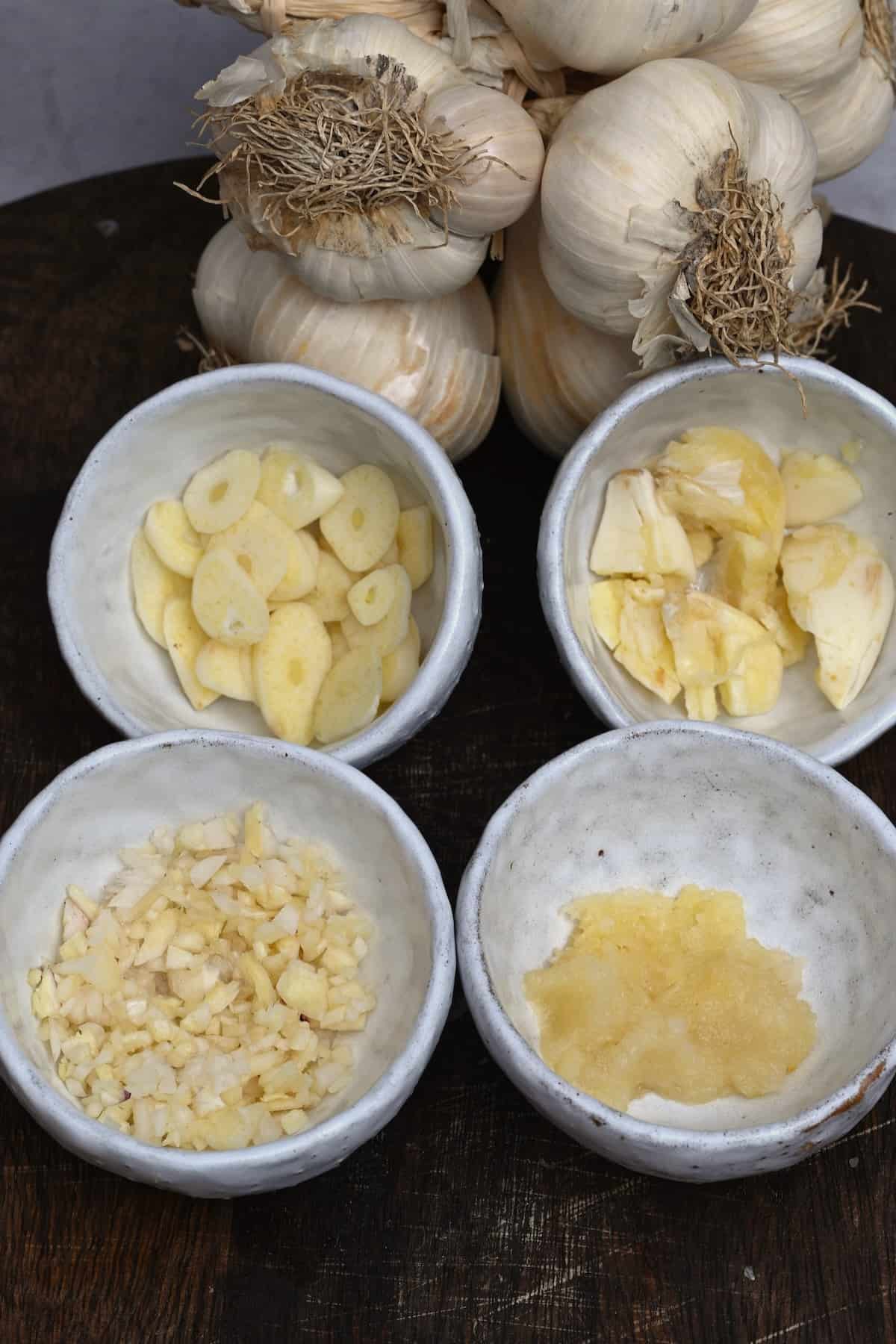
Garlic is a staple in my kitchen, right up there with onions (how to cut an onion). It’s essential for adding flavor and aroma to countless recipes. And, while a jar of lazy garlic might look really tempting for those intimidated by how to prepare garlic from a whole head, put it down! It doesn’t taste anywhere near as good and contains added ingredients.
Instead, follow my easy guide on how to mince garlic cloves in no time, as well as chop into small pieces, crush, slice, and press it for all your needs!
What’s In This Post
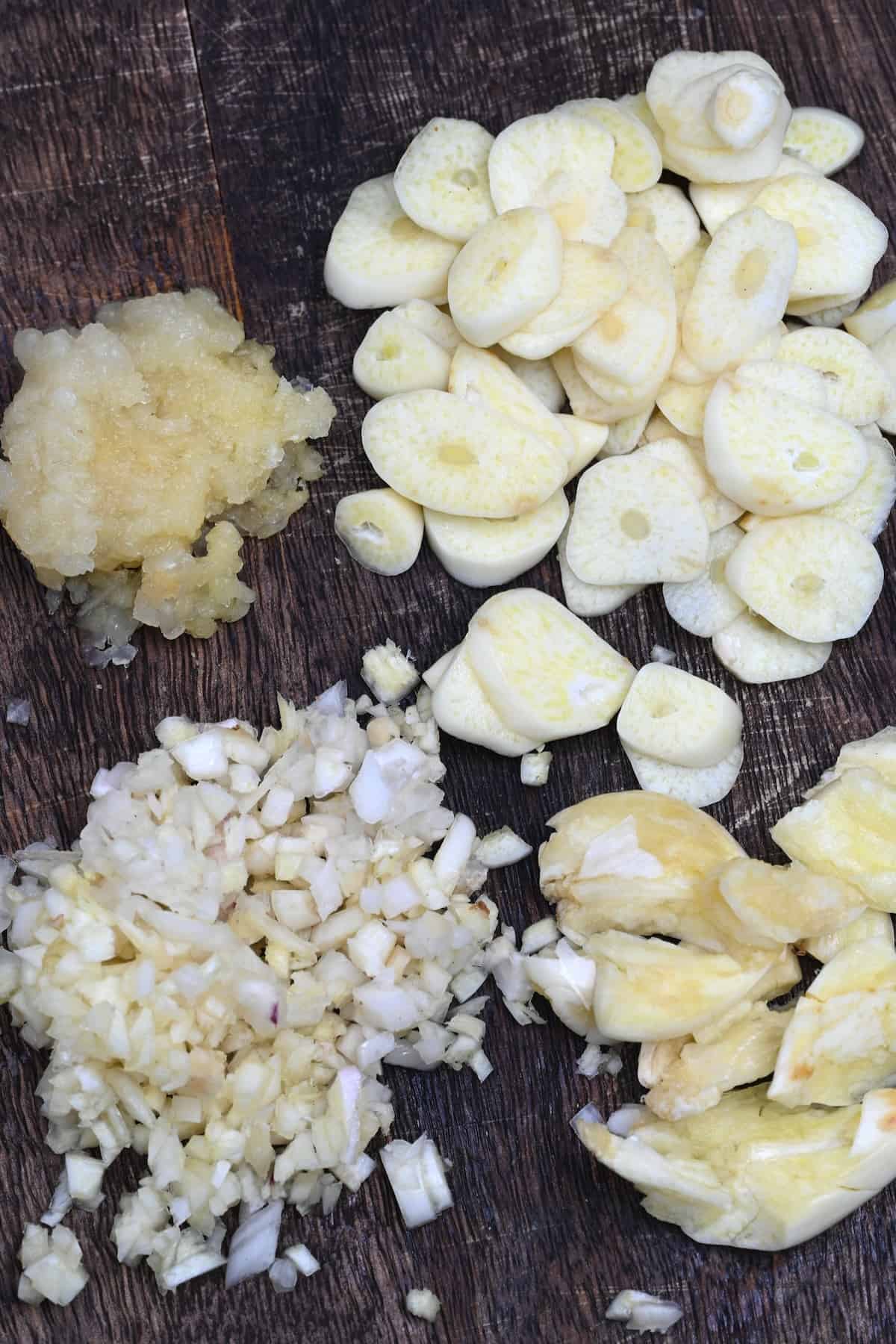
Types Of Garlic
While there are many different varieties of garlic, there are three main “types.” These are hardneck, softneck, and elephant garlic (though the latter is technically a leek, not true garlic).
The “neck” in the name refers to the stalk that grows from the middle of the bulb upwards, with hardnecks containing a firm stalk and softnecks containing leaves instead. Hardnecks tend to have fewer individual cloves but the ones they have are larger. They’re also usually easier to peel and are arguably the more flavorful type.
However, softneck garlic is better for long-term storage. In comparison, elephant garlic has very large bulbs and a very mild garlicky flavor.
What Is A Garlic Bulb?
A garlic bulb refers to a whole head of garlic and is a complete bunch of garlic cloves covered in a white-ish papery skin.
What Is A Clove Of Garlic?
Within a bulb of garlic, there are individual lobes (also covered in the papery peel) called cloves. Usually, there are between 11-16 cloves per softneck bulb, though hardneck may contain between 4-12, and elephant garlic usually only contains 4-7 cloves.
How To Open A Garlic Bulb
Place the head of garlic on your chopping board with the pointed end facing upwards.
Then, place the heel of your hand (or the side of a wide chef’s knife/cleaver) directly over the point and, using your second hand to press down over the first, firmly press/bang the garlic and twist your hand to release the individual cloves.
To avoid mess while doing this, place the head of garlic in a Ziplock bag first.
Is There a Trick to Peeling Garlic?
Peeling garlic may be the most difficult (and annoying) part of using it. However, there’s not only one “trick” or “hack” to peeling garlic with minimal time and effort, but several. I’ve tested 6 popular ways to peel garlic, so you can choose your favorite one. Once you have peeled garlic cloves, it’s time to prepare the garlic.
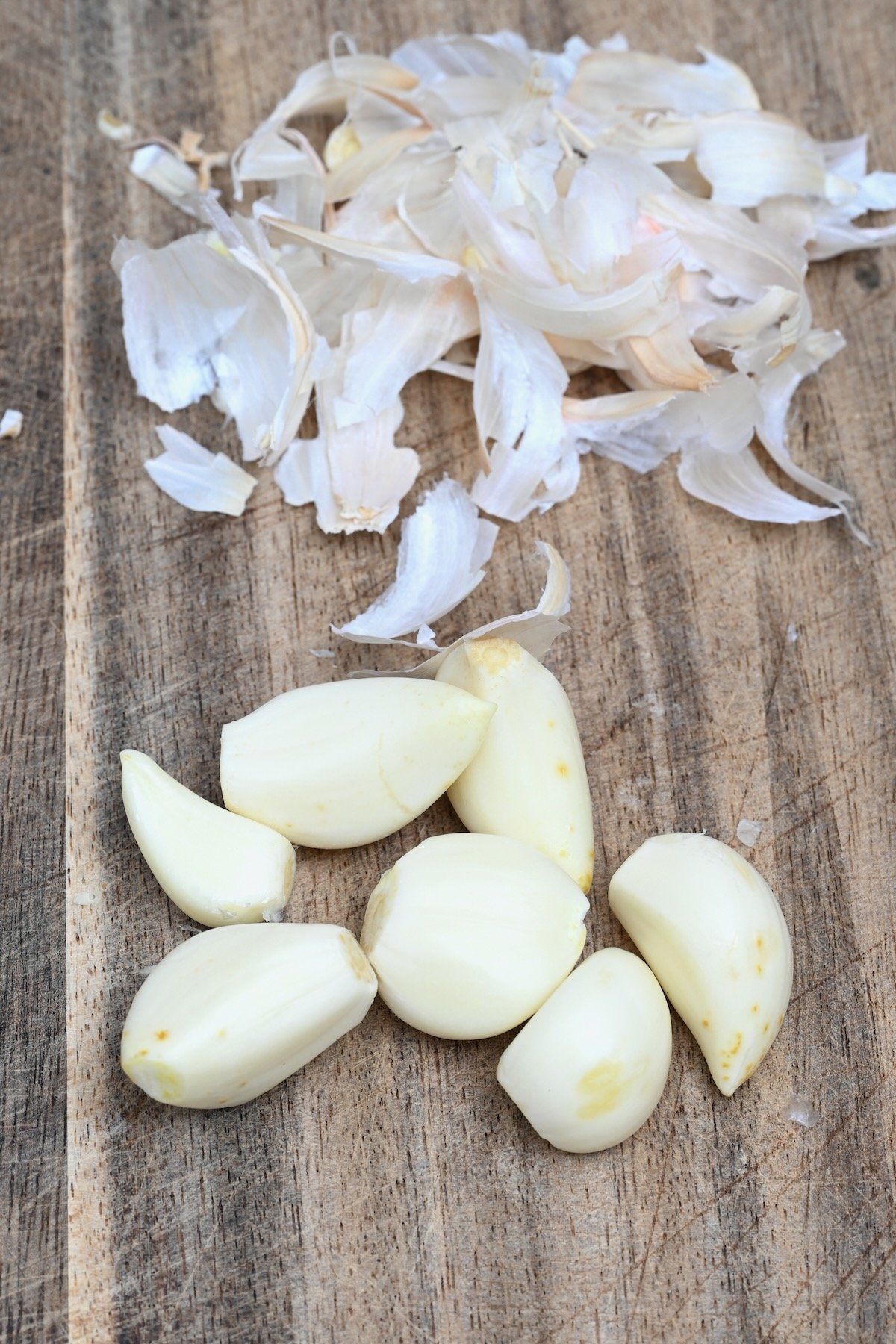
How To Prepare Garlic
Learn how to cut garlic cloves / prepare garlic in 7 ways with this step by step guide, including fresh crushed, grated, chopped, sliced, pureed, pressed, and minced garlic.
Note the more you process garlic, the stronger smelling and tasting it will become. This is because garlic contains a compound called allicin that releases upon chopping. So the more you “damage” it, the more robust the flavor/smell.
Below is a list of 7 methods, from least to most processed, with the final option adding the most robust, pungent smell and flavor to any dish.
How to Crush Garlic
Crushed garlic requires very little effort and produces a very mild flavor. All you need is a wide chef’s knife or cleaver.
- After peeling the garlic cloves, place them flat on your chopping board and, one at a time, place the flat of the blade of the knife over the clove.
- Use the side of your fist to tap firmly on the side of the knife and smash the clove.
Alternatively, you can use the bottom of a small skillet or saucepan to firmly press into the garlic.
Uses: Crushes garlic will release mild flavor, so it works well in slow-cooking sauces, chili, or soup – to be fished out before serving.
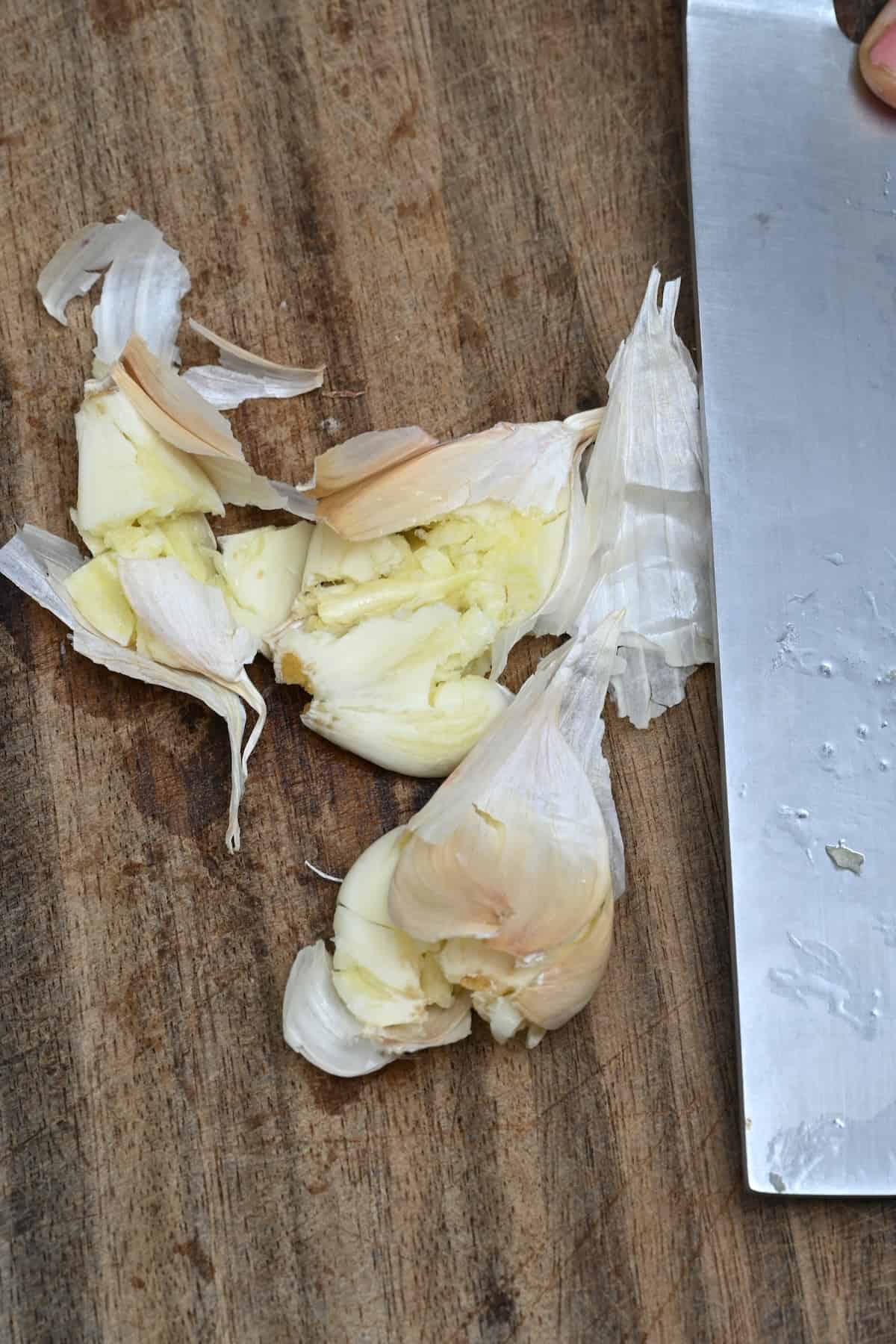
How to Chop Garlic
Roughly chopping garlic is a quick and simple way to prepare it for dishes.
- First, start by crushing/smashing the garlic cloves as written above and cutting off the dry stem end.
- Then, run your knife back and forth over the garlic in a rocking motion to your desired size.
Uses: Chopped garlic will work well in soups, stews, chilies, and stir-fries, but may be too chunky for sauces, dressings, etc.
How to Slice Garlic
- To slice the garlic cloves, ensure you’re using a sharp chef’s knife, and first, cut off the tough root end.
- Then use your non-dominant hand to hold the clove while you use the other to slice the garlic clove (crosswise or lengthwise) into thin slices (as thin/thick as you’d like).
Alternatively, you can use a mandoline for perfectly even slices, but as the cloves are small, wear protective gloves and be careful.
Uses: Sliced garlic is great for dishes where they’re sautéed or stir-fried, in pickles or any dish you want to see it in the dish.
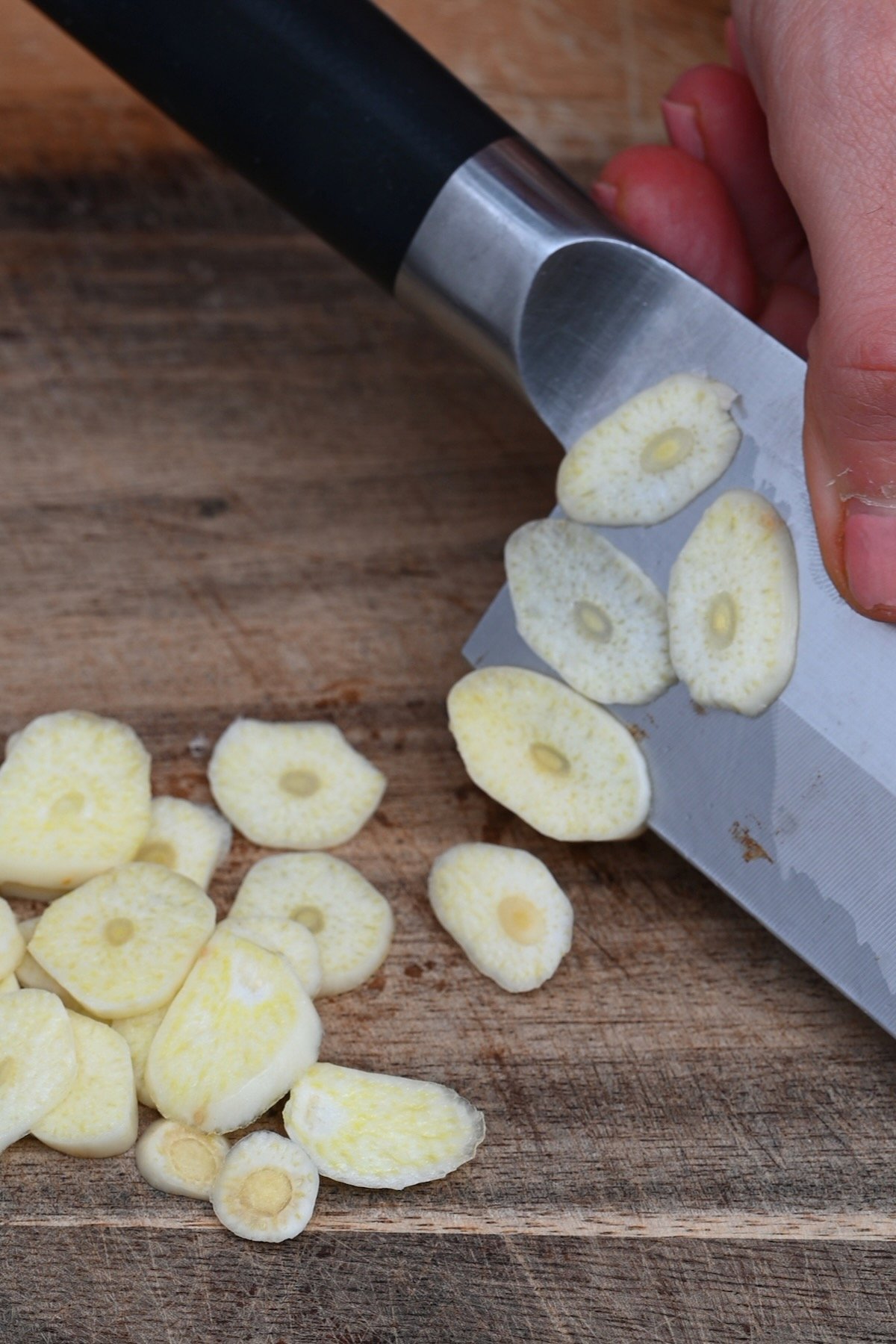
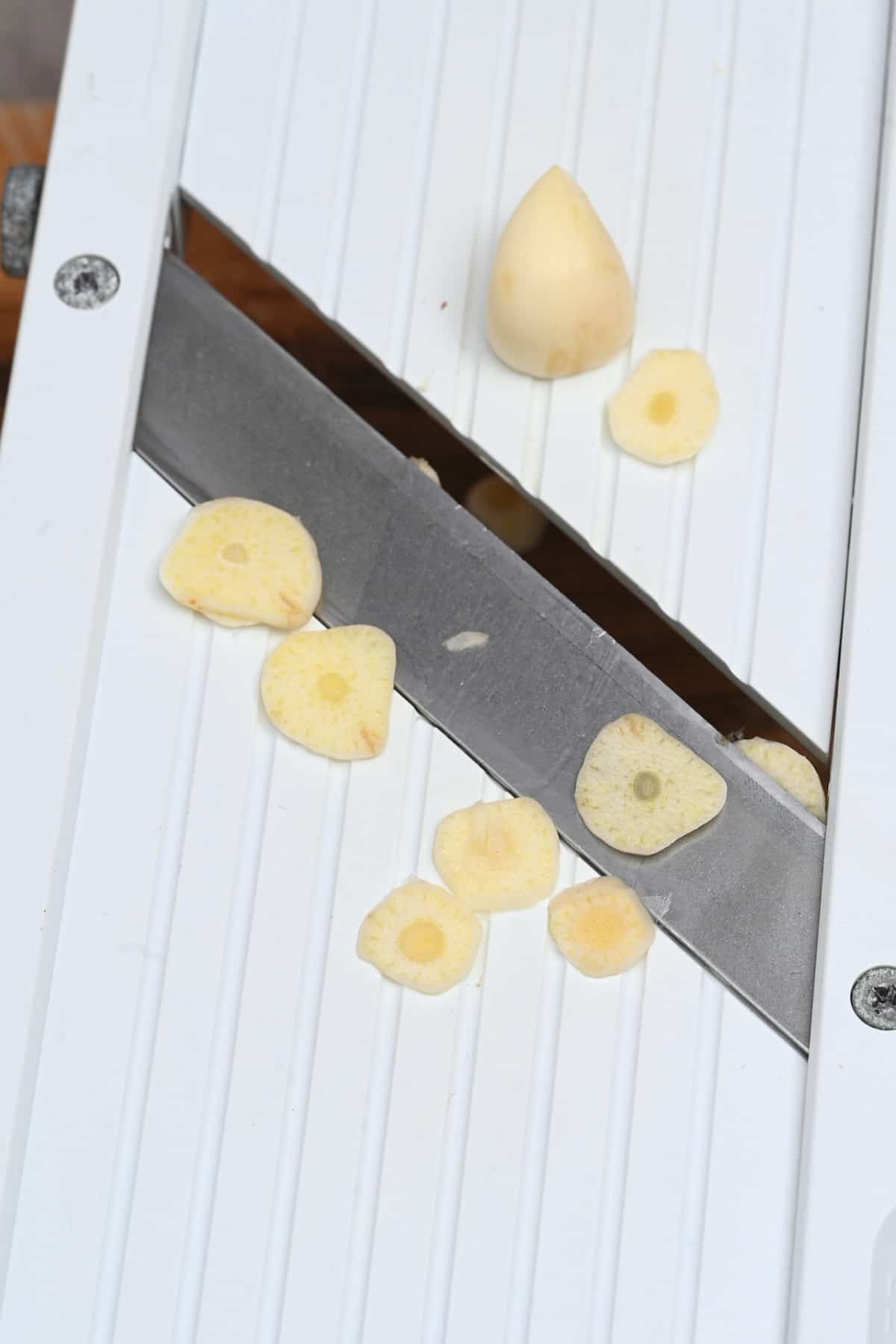
How to Mince Garlic
Mincing garlic is probably the most common option for preparing this ingredient and you can mince garlic without a mincer, too, all you need is a sharp knife!
- Start by smashing garlic cloves (as written above) OR slicing the garlic, cutting off the tough stem end.
- Then, run your knife back and forth over the garlic in a rocking motion until it reaches your desired consistency.
Check my guide on how much minced garlic equals a clove so you know how much to prepare.
A “cheat” method to mince garlic is to chuck the cloves into a mini food processor and pulse until it reaches your desired consistency.
Uses: Minced garlic is my go-to for most recipes that call for fresh garlic. You can use garlic minced in soups, sauces, marinades, salad dressings, dips, salsa, etc.
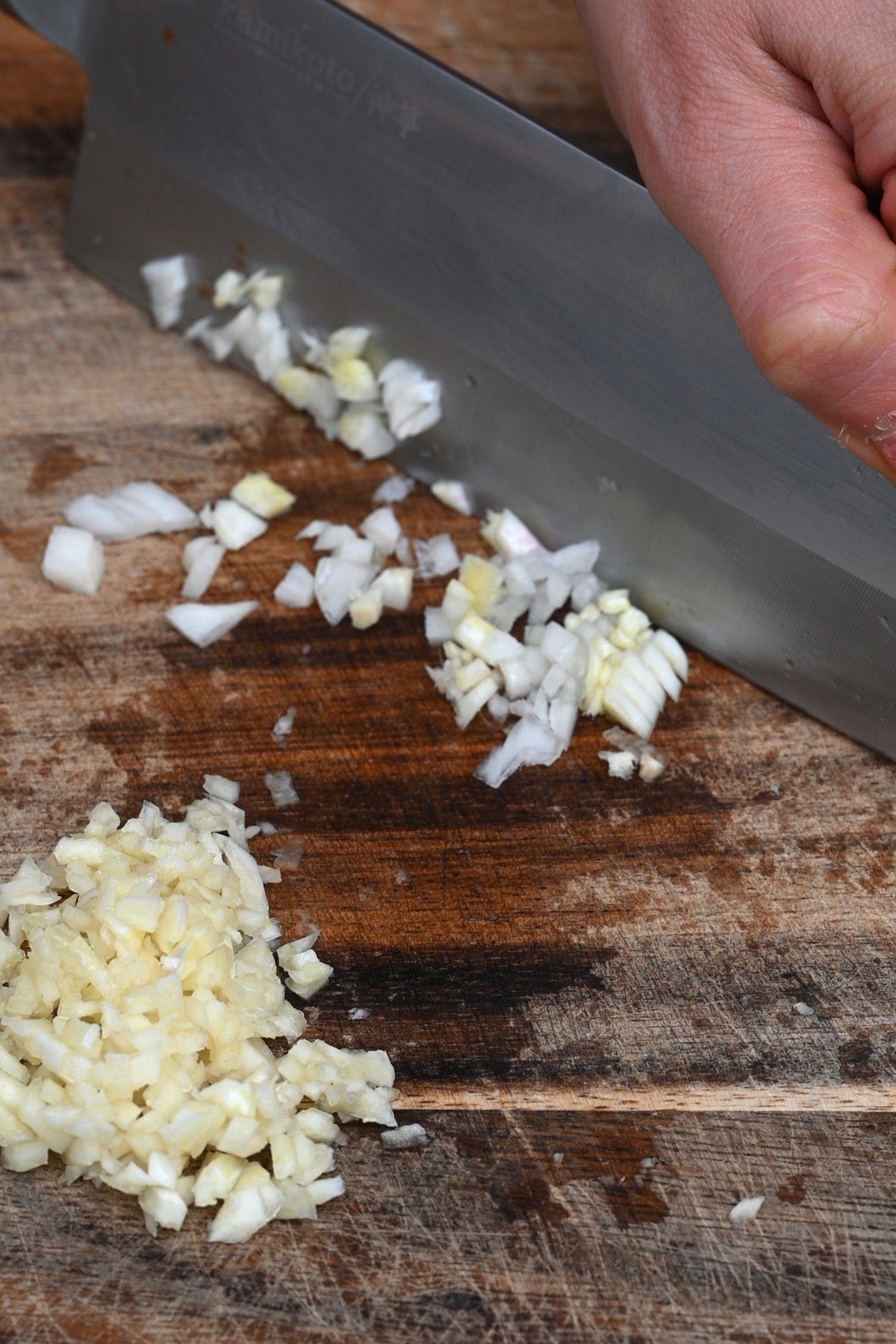
How to Grate Garlic
Grated garlic is very similar to garlic cloves minced, but with even less texture, and with a tool many may already have in the kitchen: a Microplane zester/grater or a box grater (use the shredder side).
- Peel the cloves, then simply rub one at a time over the Microplane tool/grater, with a dish beneath to catch the pulp. Don’t grate too much of the clove, though, or you risk damaging your fingertips.
You can also grate garlic from frozen if needed, though it doesn’t take long to thaw.
Uses: This is often used in dressings and is great for recipes where you really want a punch of garlic flavor.
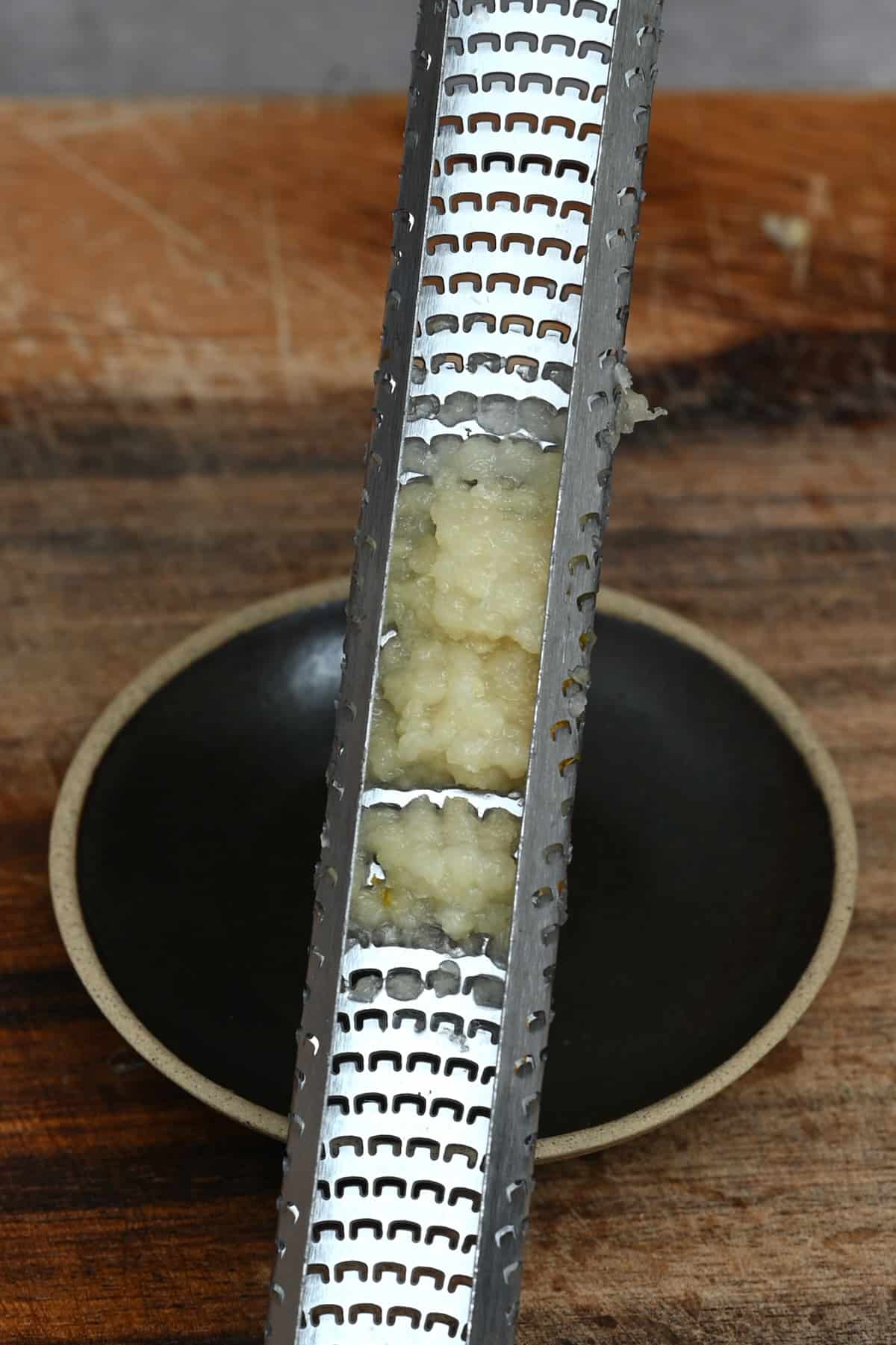
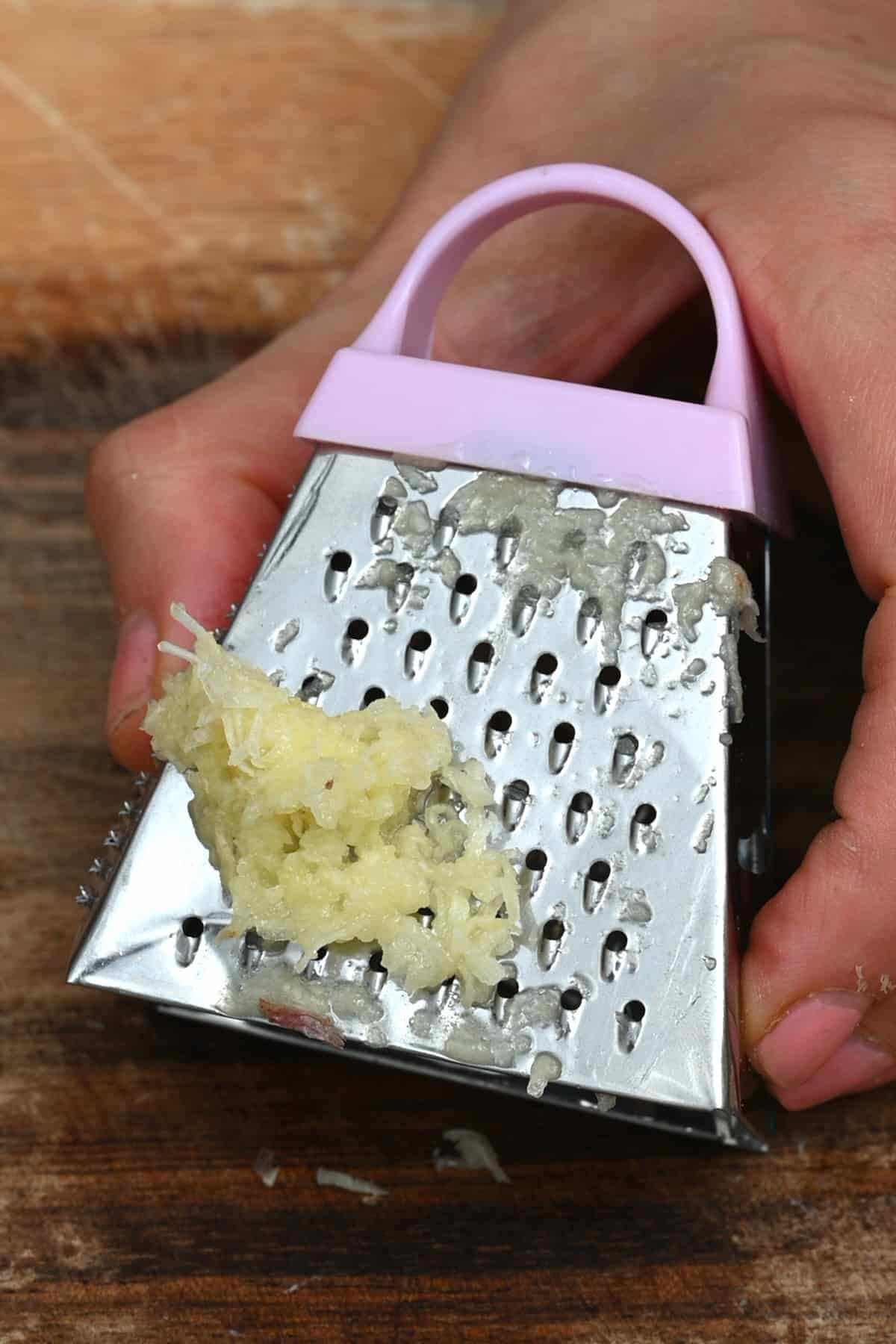
How to Press Garlic Cloves
What’s great about this method is you don’t even have to peel the clove.
- Throw the entire clove (no need to peel unless preferred) into the press “hopper” and squeeze, and it will naturally filter out the skins and press out the garlic paste.
Just note that you’ll need to scoop out the peel in between cloves.
Alternatively, other garlic presses are curved in shape, where you place the clove on your cutting board and press and roll the garlic press over it.
Uses: This is one of the most potent methods of preparing garlic for a pungent flavor. Avoid using it in raw recipes unless pairing it with an acid, like lemon juice, to mellow the flavor. Otherwise, it’ll work great in soups and cooked sauces, too.
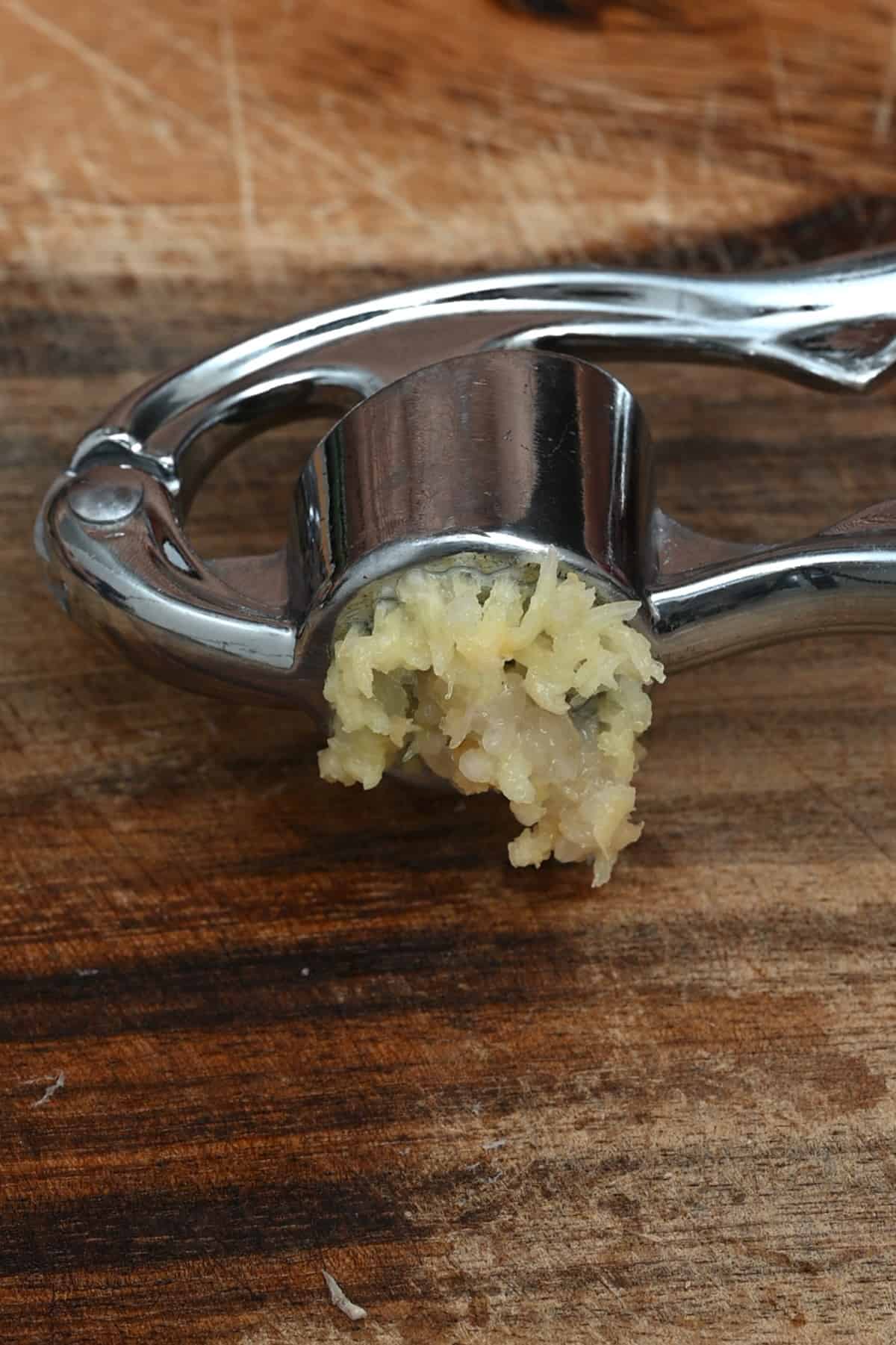
How to Puree Garlic
- First, peel the cloves and trim off the dry stem end.
- Transfer them to a mini food processor or blender. Blend into a creamy puree consistency.
See all the details to homemade garlic paste.
Uses: You can use pureed garlic in almost all the same ways as the minced version. You can also freeze pureed garlic to use later. This version blends really well to flavor the entirety of dishes, perfect for curries and other sauce-y dishes.
How Much Garlic Paste Equals One Clove?
One teaspoon of garlic paste/minced garlic is equal to one large clove or two small cloves.
How Much Garlic Powder Equals One Clove
1/8 tsp of garlic powder equals 1 clove. If you use 1/2 tsp of powder, it’s like using 4 cloves, etc.
How to Store Whole Garlic Heads and How Long Do They Last
First, select good garlic from the store. The heads should be firm and heavy for their size, with no soft spots. Store it in a cool, dry, well-ventilated, dark place, and it should be fine for 2-3 months (up to 6 months in some cases).
However, as soon as you remove the cloves, aim to use the bulb within 7-10 days.
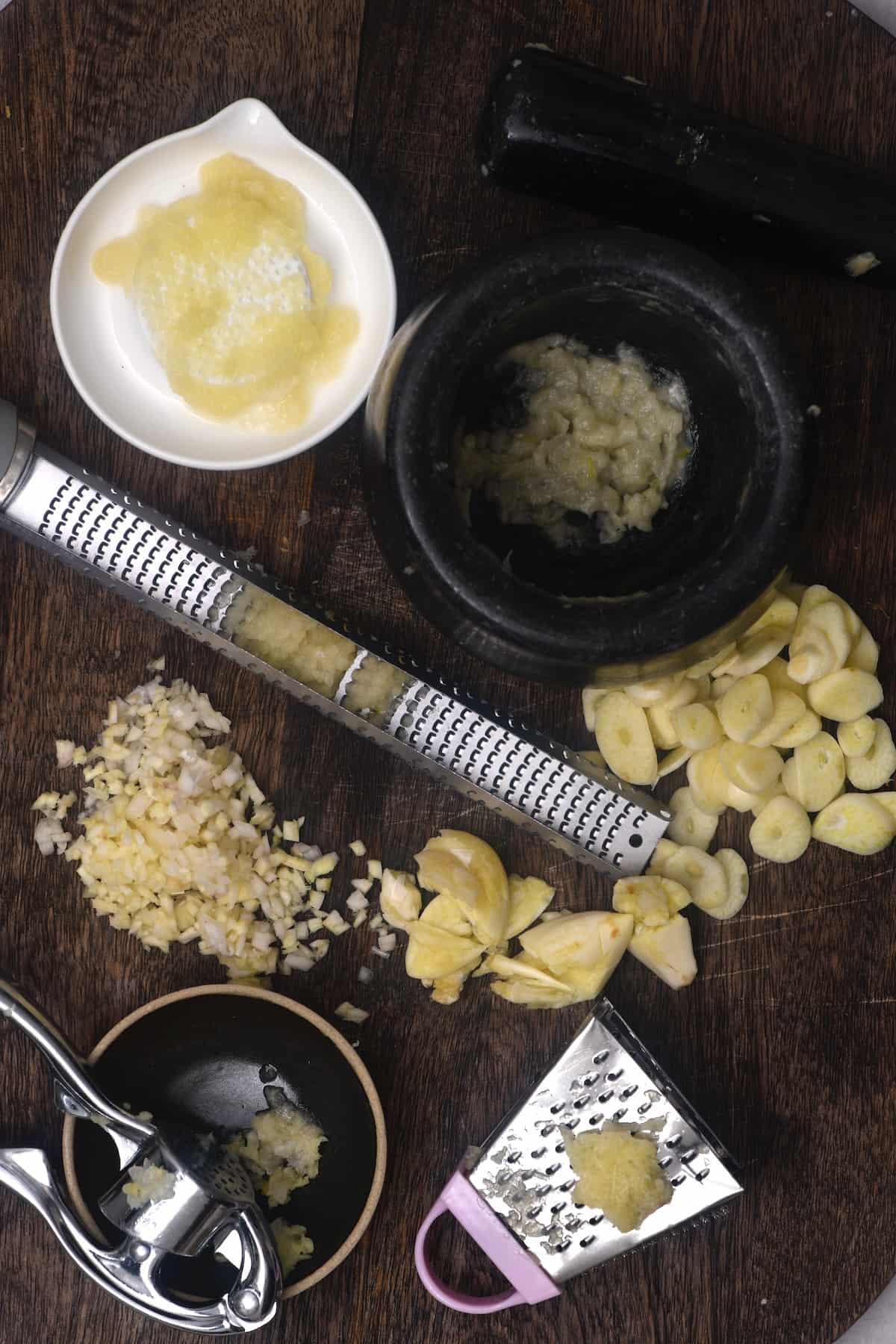
How to Store Peeled Garlic
Once peeled, store the separate garlic cloves in an airtight container in the refrigerator.
How Long Does Peeled Garlic Last
It will last for 5-7 days. Just note that the quality of the flavor will deteriorate over time.
How to Store Minced Garlic
Any chopped, sliced, minced, etc. garlic is best eaten as soon as possible, as the quality deteriorates quickly.
How Long Does Minced Garlic Last
I recommend storing them in an airtight container in the fridge for only up to a day.
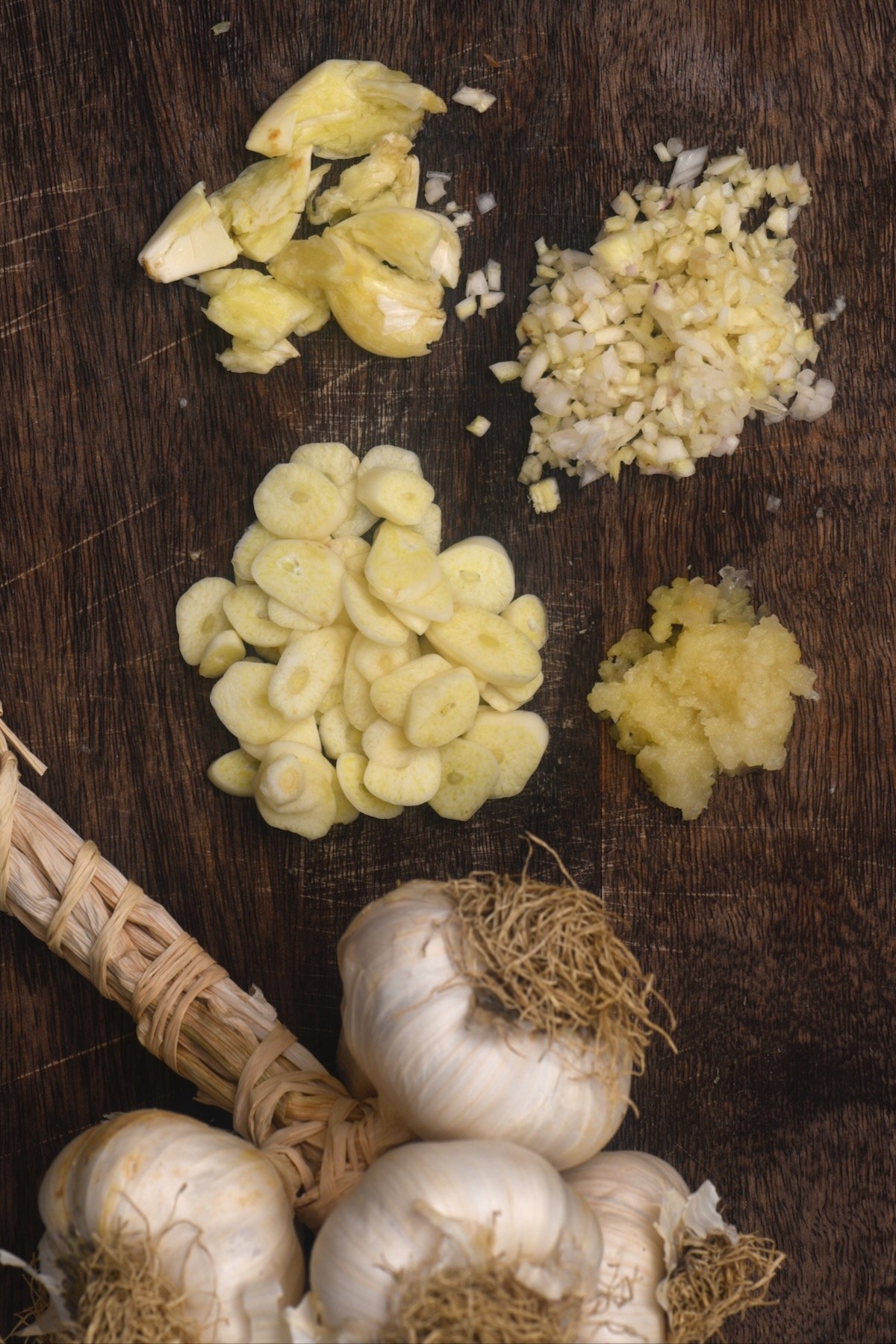
Can You Freeze Garlic?
You can freeze the whole cloves in a Ziplock bag for up to 6 months, then thaw them at room temperature when needed. However, the texture may soften, so this isn’t a method I do often.
You can also freeze the prepared garlic – I specifically like to freeze garlic puree – for between 3-4 months. I prefer to do so in portions (i.e., one clove/one teaspoon, etc.). If portioned, you can often pop the frozen garlic directly into your dish.
Be careful about placing something icy directly into a pan with oil, as it will spit a lot.
Read more about all the ways to freeze garlic here, including top tips and more.
Does Garlic Go Bad?
While the shelf life of whole unpeeled garlic is pretty impressive, it can definitely go bad. A whole, unpeeled head of garlic can last several months in the right conditions. However, a peeled clove will only last about a week in the fridge, and any chopped garlic should be used within a day.
You can usually tell if garlic has gone bad if it’s become soft, has a sour smell, or you notice discoloration.
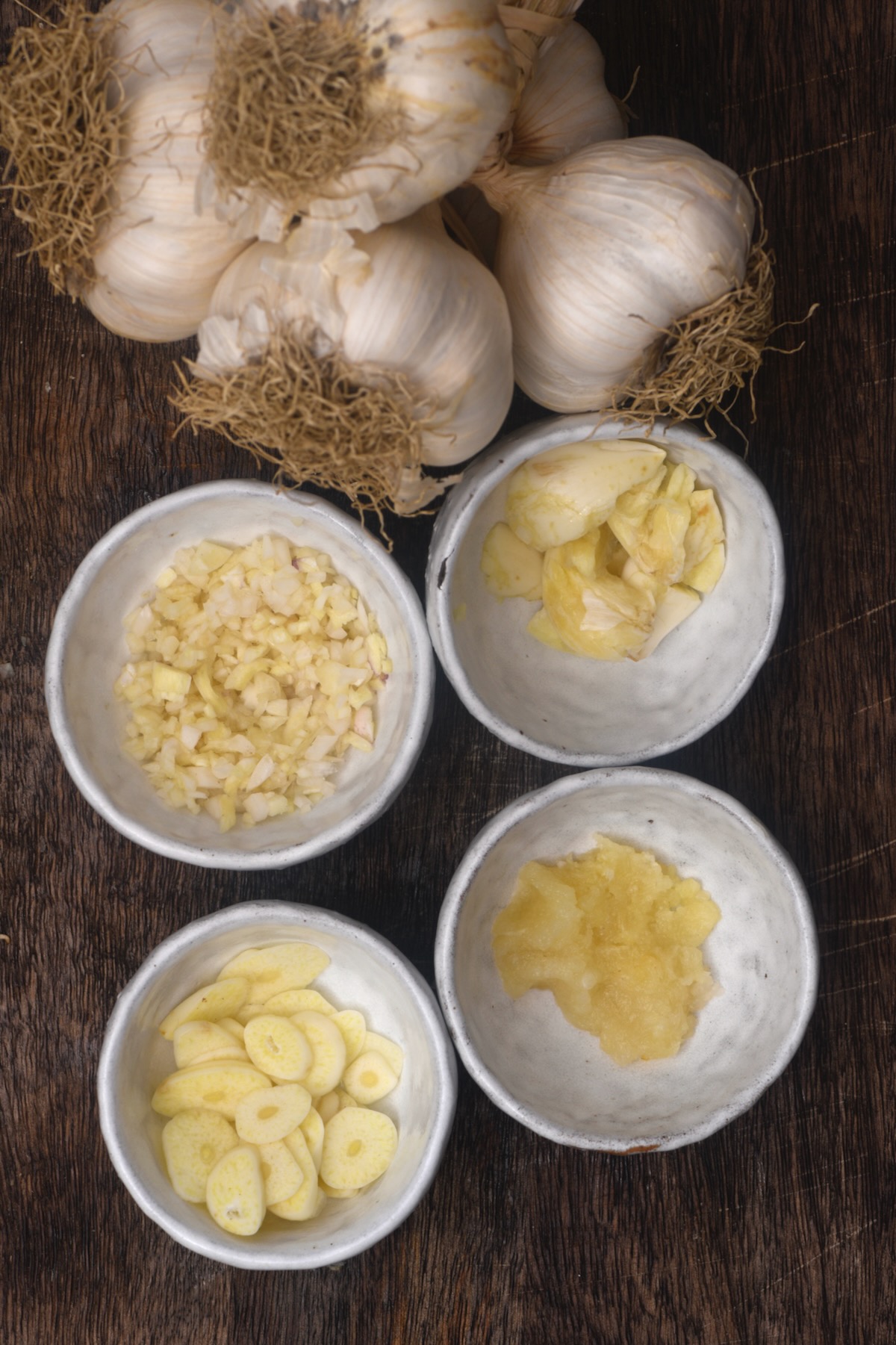
How to Remove Garlic Smell from Hands
As delicious as it is, this ingredient is also pretty stinky, and the smell can linger on your skin for up to 2 days. To get rid of this sooner, there are several methods to choose from:
- Rub your hands on stainless steel, then rinse with soap.
- Create a scrub with 1 tsp salt + 2 Tbsp baking soda and just enough water to form a paste, then scrub it over your hands for 30 seconds. Rinse away with soap.
- Lemon juice or white vinegar (as long as you have no cuts) can help neutralize the smell. You can double it up with a small amount of salt, too.
- Coffee grounds rubbed into your hands can take over the smell of garlic.
- Toothpaste that contains baking soda can be combined with water and rubbed over your hands, then rinsed away with soapy water.
To stop the smell from getting on your hands in the first place, you could wear kitchen gloves.
FAQs
Crushed garlic smashes the whole cloves open slightly to infuse flavor into dishes (usually removed before serving). What is minced garlic on the other hand – it is finely chopped and will flavor an entire dish quickly.
Puree is usually made with a food processor/blender for the smoothest consistency. In comparison, minced garlic can be made with a garlic press, microplane, or by hand.
Minced garlic is a finer dice/consistency than chopped garlic, though it follows a similar method when done by hand.
Chopped garlic isn’t usually as precise, just cutting it down to a general size. Whereas diced garlic is more methodical and uniform.
More often than not, both are the same. Sometimes, garlic paste has oil added, while garlic puree has only been mashed to a smooth consistency.
More Garlic Recipes and DIYs
- Garlic Powder
- Garlic Flakes (+ Dried Minced Garlic)
- How to Roast Garlic in the Oven (Whole Roasted Garlic + Cloves)
- How To Make Garlic Confit (& Garlic Oil)
- Pickled Garlic (Plain and TikTok Spicy Pickled Garlic)
- Fermented Garlic Honey
- How to Make Black Garlic
Alternatively, browse my list of 30+ garlic recipes for more inspiration!
If you try any of these methods to prepare garlic, let me know how it goes in the comments below. I’d appreciate a recipe card rating and would love to see your recreations – tag me on Instagram @Alphafoodie!
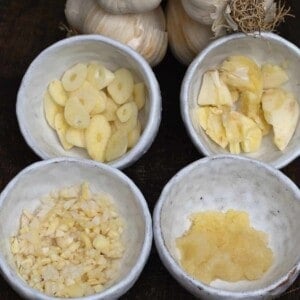
How To Crush, Chop, And Mince Garlic
Ingredients
- 1 head garlic or as much as needed
Instructions
How To Open A Garlic Bulb
- Place the head of garlic on your chopping board with the pointed end facing upwards.
- Place the heel of your hand (or the side of a wide chef's knife/cleaver) directly over the point and, using your second hand to press down over the first, firmly press/bang the garlic and twist your hand to release the individual cloves.To avoid mess while doing this, place the head of garlic in a Ziplock bag first.
How to Peel Garlic
- There's not only one "trick" or "hack" to peeling garlic with minimal time and effort, but several. I've tested 6 popular ways to peel garlic, so you can choose your favorite one. Once you have peeled garlic cloves, it's time to prepare the garlic.
How to Crush Garlic
- After peeling the garlic cloves, place them flat on your chopping board and, one at a time, place the flat side of the knife over the clove.
- Use the side of your fist to tap firmly on the side of the knife and smash the clove.Alternatively, you can use the bottom of a small skillet or saucepan to firmly press into the garlic.
How to Chop Garlic
- Start by crushing/smashing the garlic cloves as written above and cutting off the dry stem end.
- Run your knife back and forth over the garlic in a rocking motion to your desired size.
How to Slice Garlic
- To slice the garlic cloves, ensure you're using a sharp chef"’s knife, and first, cut off the tough root end.
- Use your non-dominant hand to hold the clove while you use the other to slice the garlic clove (crosswise or lengthwise) into thin slices (as thin/thick as you'd like).Alternatively, you can use a mandoline for perfectly even slices, but as the cloves are small, wear protective gloves and be careful.
How to Mince Garlic
- Start by smashing garlic cloves (as written above) OR slicing the garlic, cutting off the tough stem end.
- Run your knife back and forth over the garlic in a rocking motion until it reaches your desired consistency.A "cheat" method to mince garlic is to chuck the cloves into a mini food processor and pulse until it reaches your desired consistency.
How to Grate Garlic
- Peel the cloves, then simply rub one at a time over the Microplane tool, with a dish beneath to catch the pulp. Don't grate too much of the clove, though, or you risk damaging your fingertips.You can also grate garlic from frozen if needed, though it doesn't take long to thaw.
How to Press Garlic
- Throw the entire clove (no need to peel unless preferred) into the press "hopper" & squeeze, and it will naturally filter out the skins and press out the garlic paste.Just note that you'll need to scoop out the peel in-between cloves.Alternatively, there are garlic presses that are curved in shape – place the clove on your cutting board and press and roll the garlic press over it.
How to Puree Garlic
- Peel the cloves and trim off the dry stem end.
- Transfer them to a mini food processor or blender. Blend into a creamy puree consistency.See all the details to make garlic paste.
Notes
- Note the more you process garlic, the stronger smelling and tasting it will become. This is because garlic contains a compound called allicin that releases upon chopping. So the more you “damage” it, the more robust the flavor/smell.
Nutrition
Nutrition information is automatically calculated, so should only be used as an approximation.









